Project Report: Evaluating JIT Manufacturing System in Supply Chain
VerifiedAdded on 2022/11/30
|16
|1542
|246
Report
AI Summary
This project report provides a detailed analysis of the Just-in-Time (JIT) manufacturing system, also known as the Toyota Production System (TPS). The report explores the core concepts of JIT, including its relevance to supply chain management, inventory reduction, and waste elimination. It examines the methodology used, which includes surveys and questionnaires, and discusses the challenges encountered during data collection. The report highlights the benefits of JIT, such as increased time efficiency and resource maximization, and offers recommendations for its implementation, including the use of ERP systems and transparency. The conclusion emphasizes that JIT is particularly beneficial for companies with limited storage space and capital, ultimately leading to increased profits. The report also includes a transcript of the presentation slides and references relevant literature.
1 out of 16

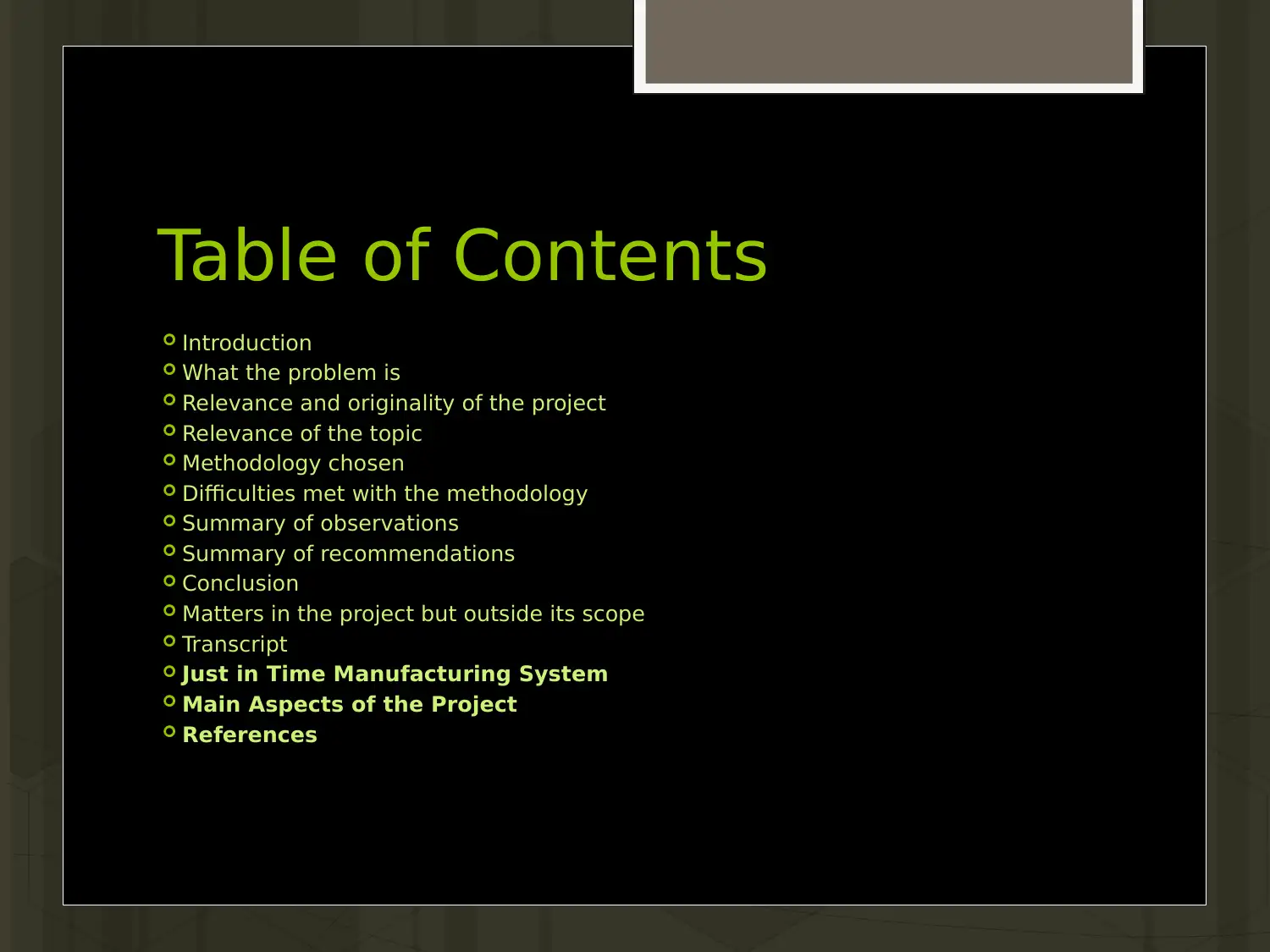
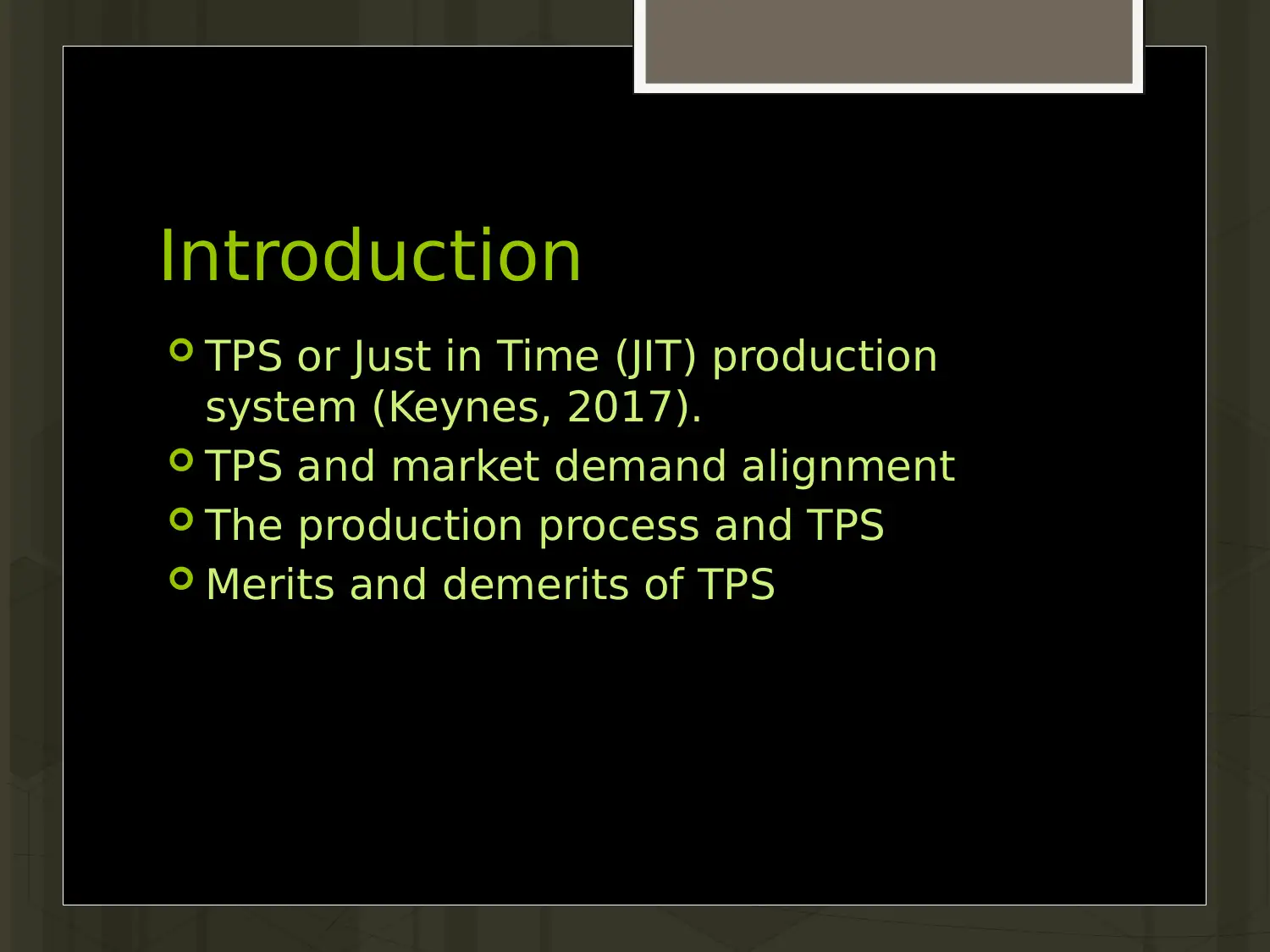

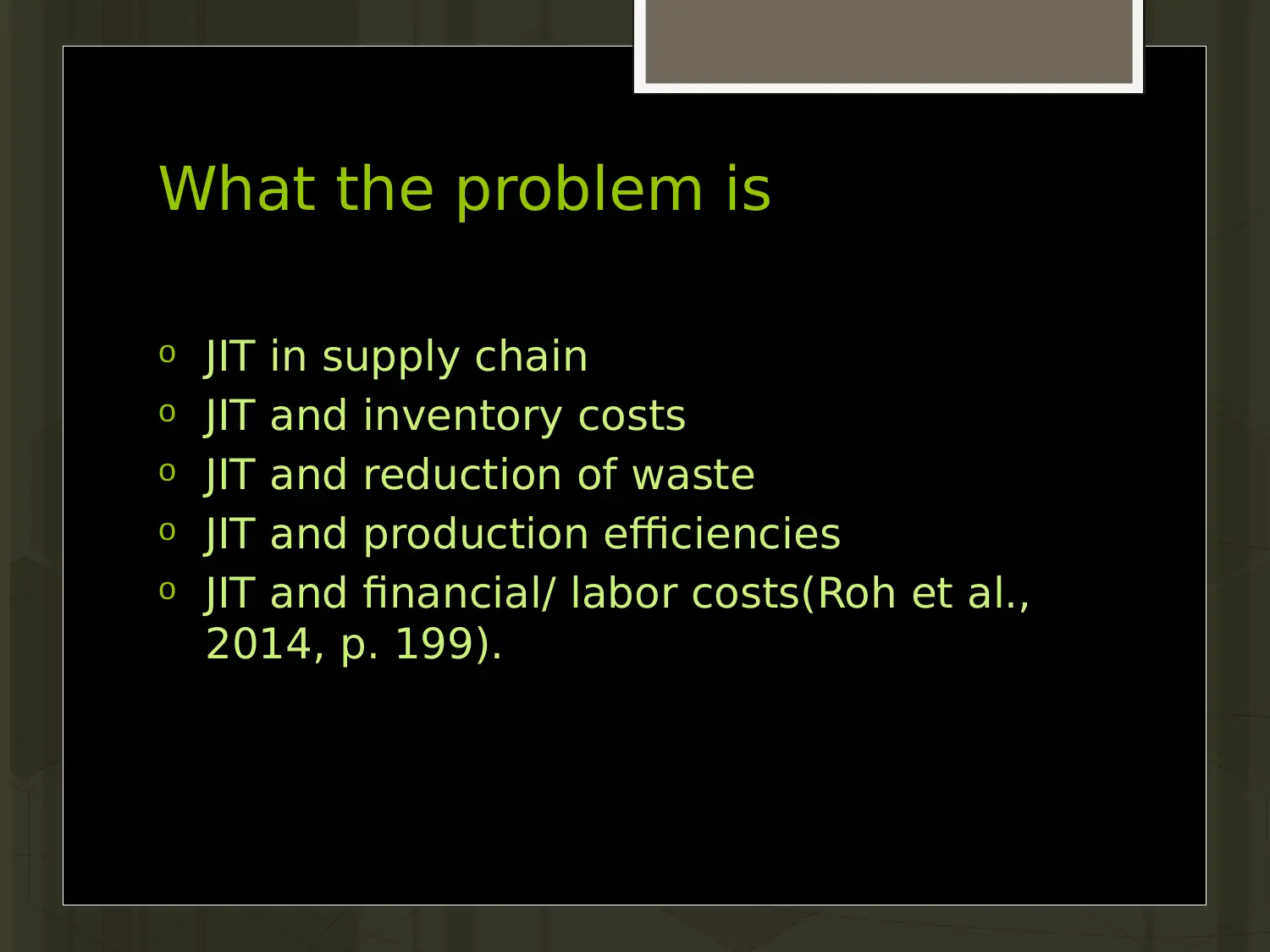
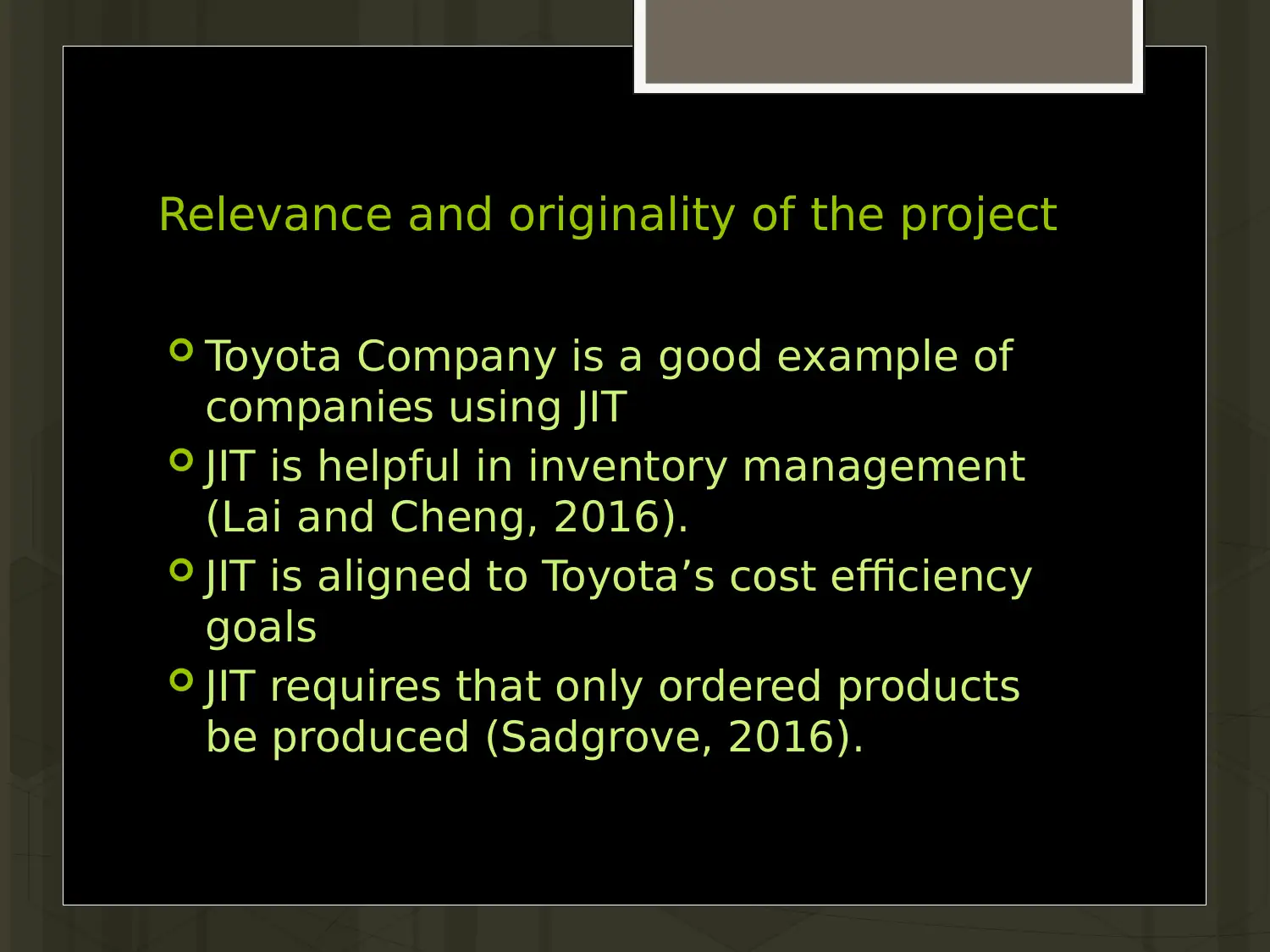
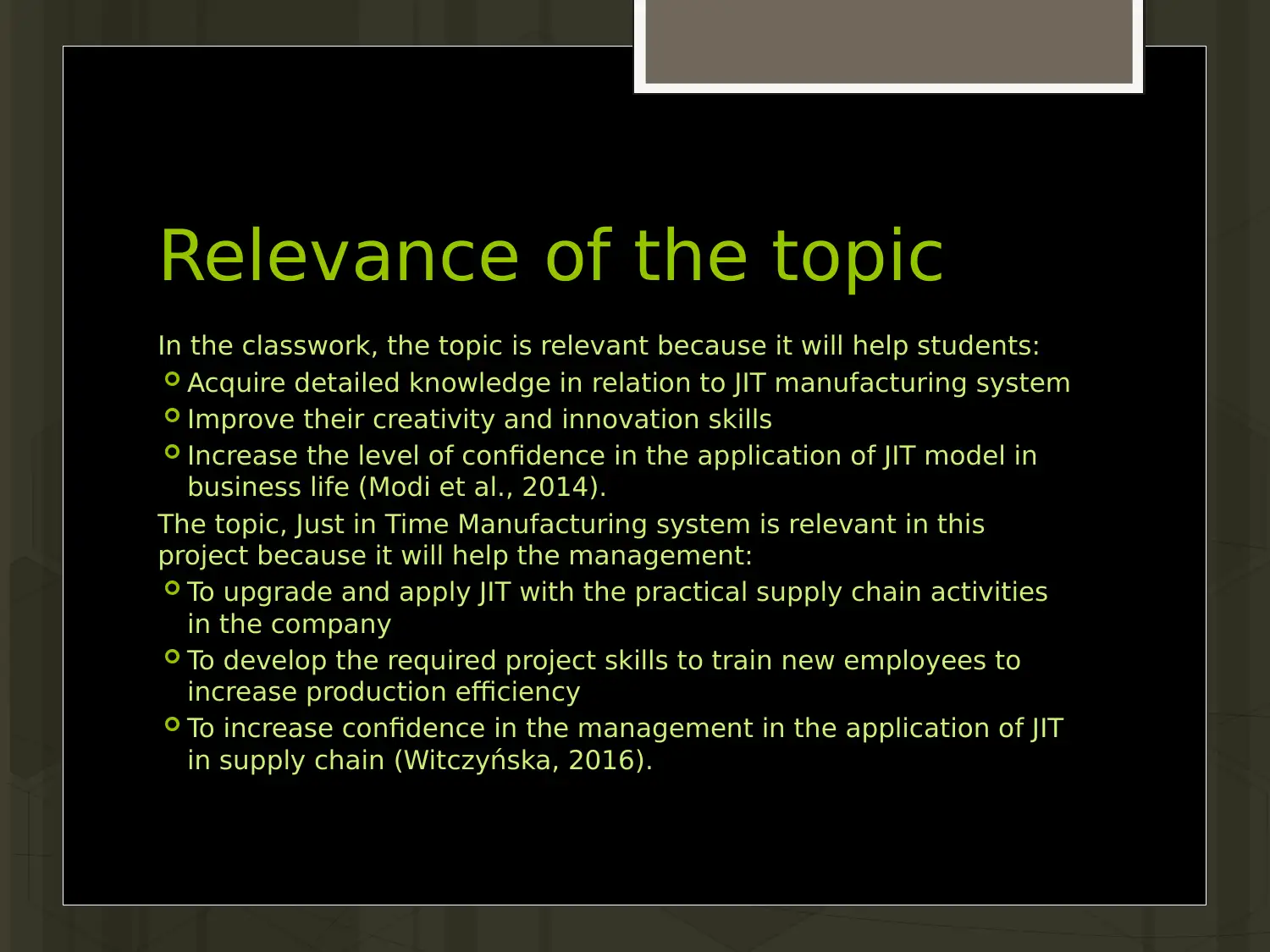
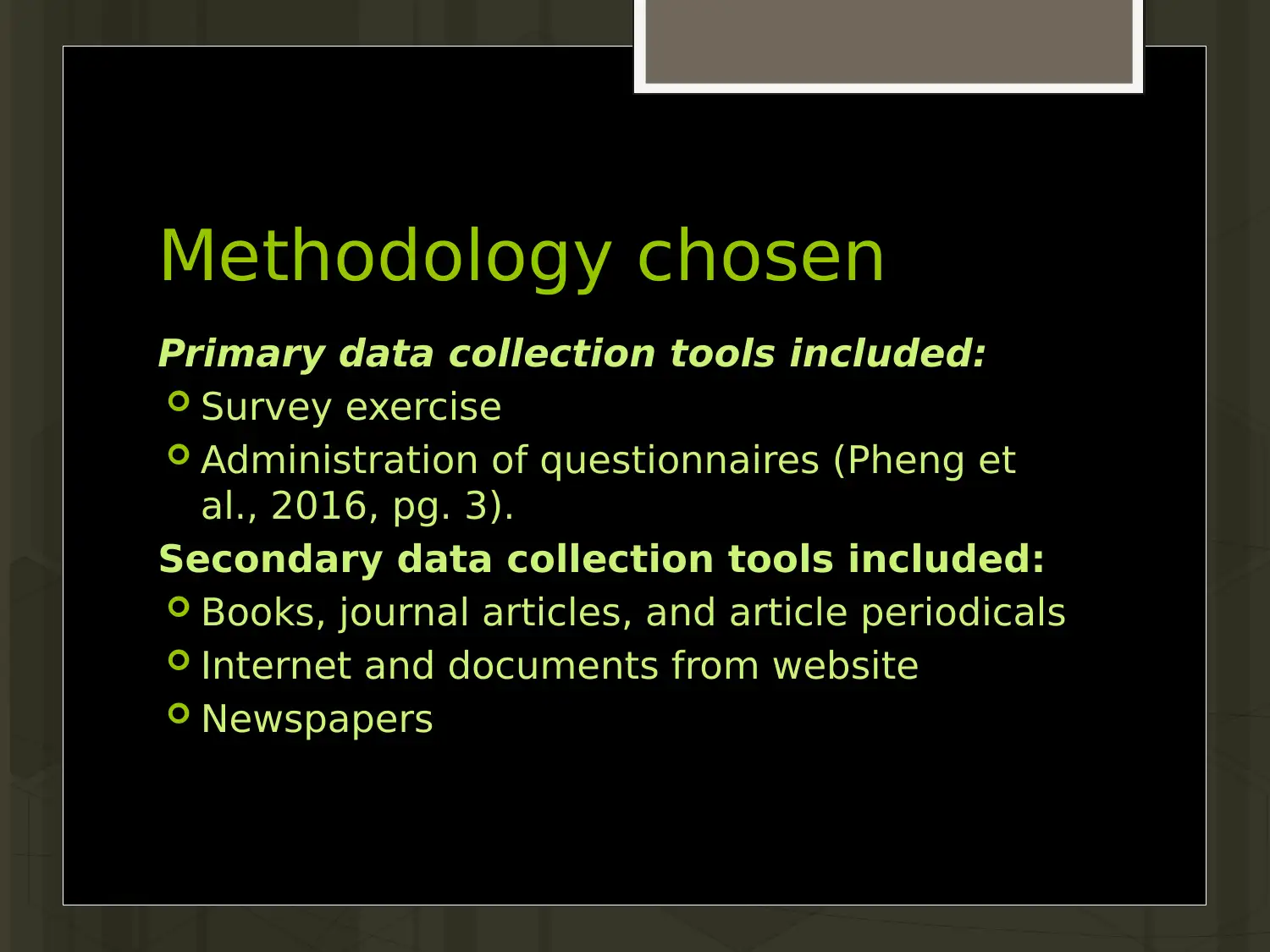


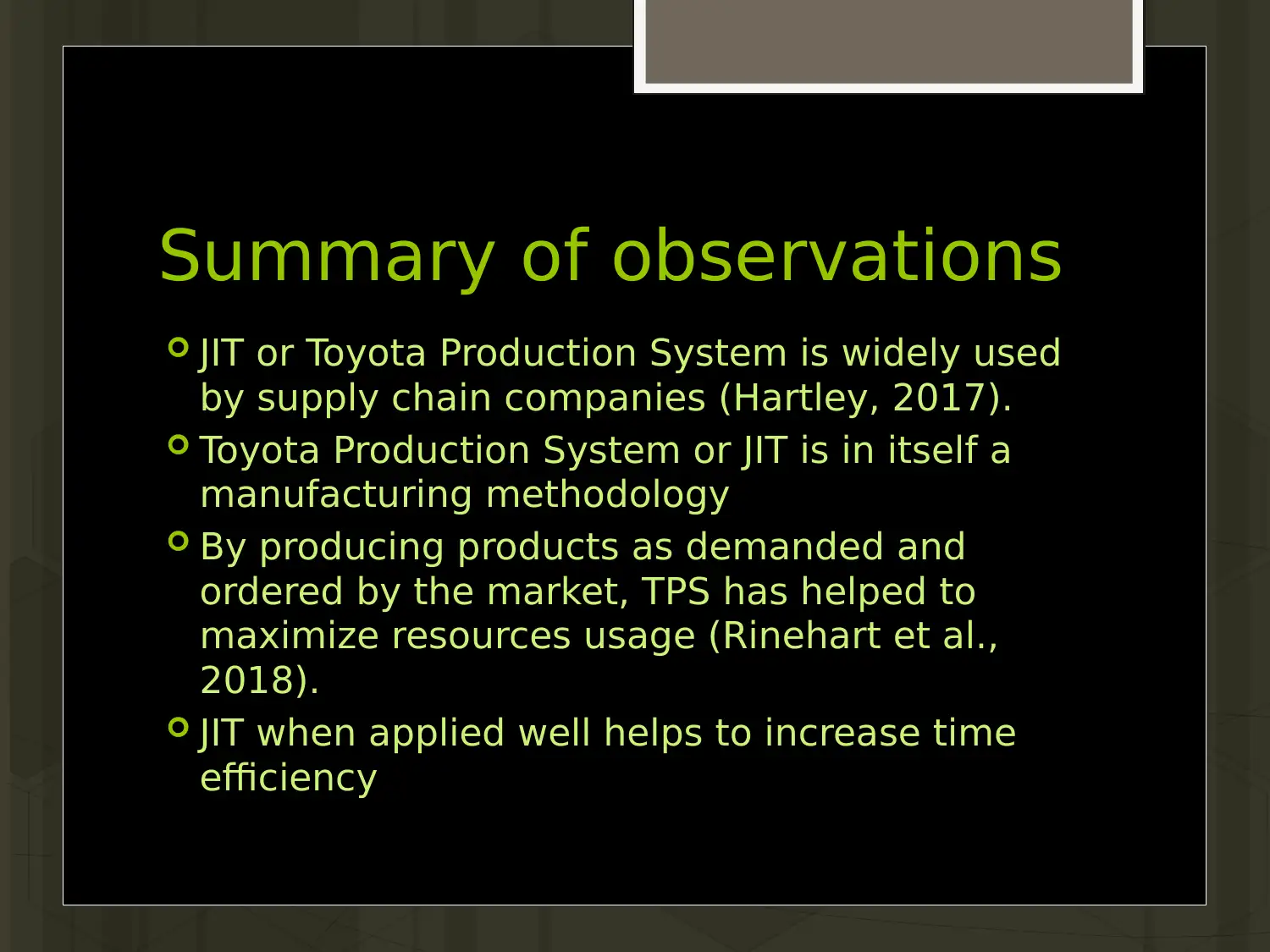
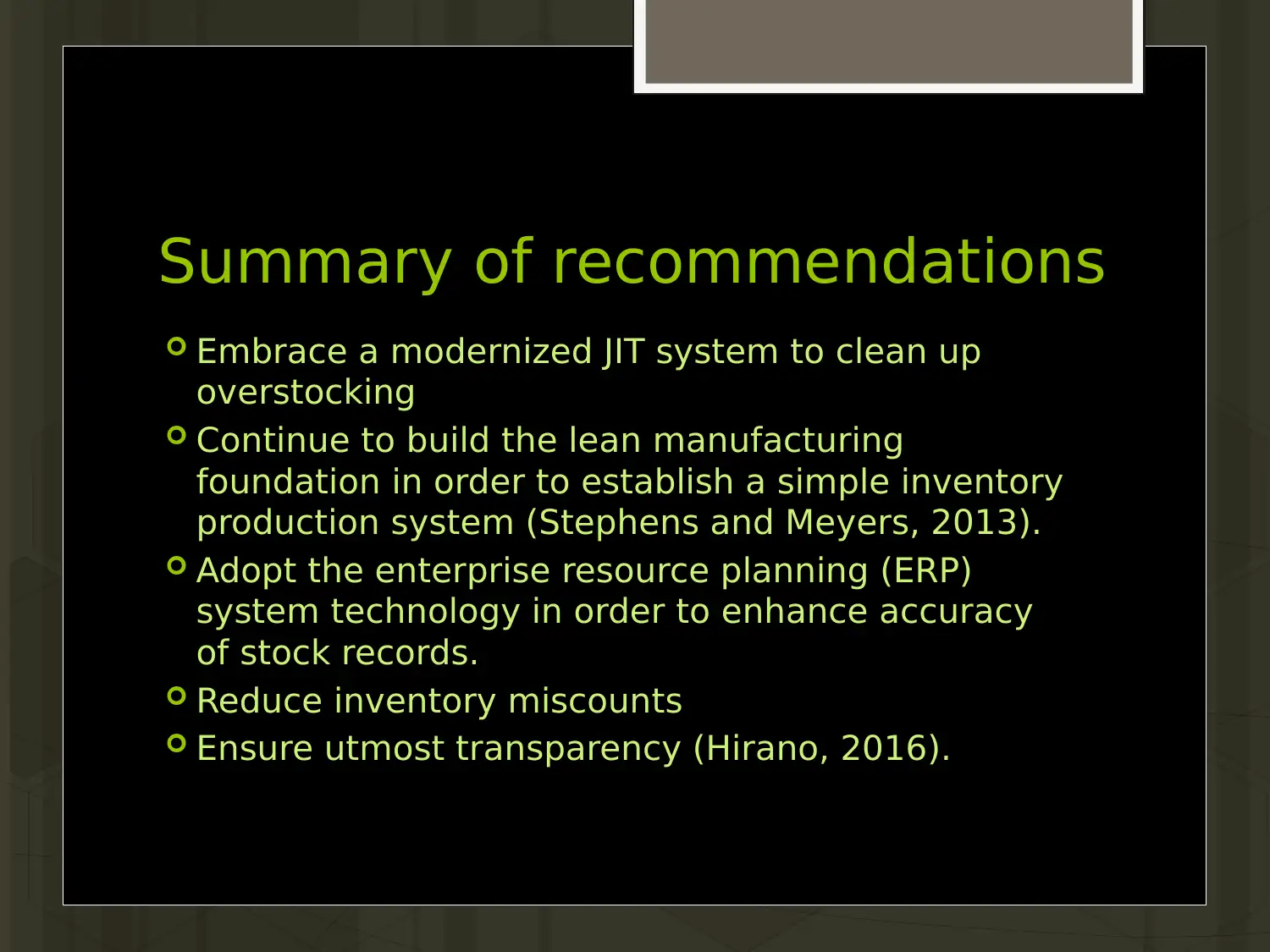
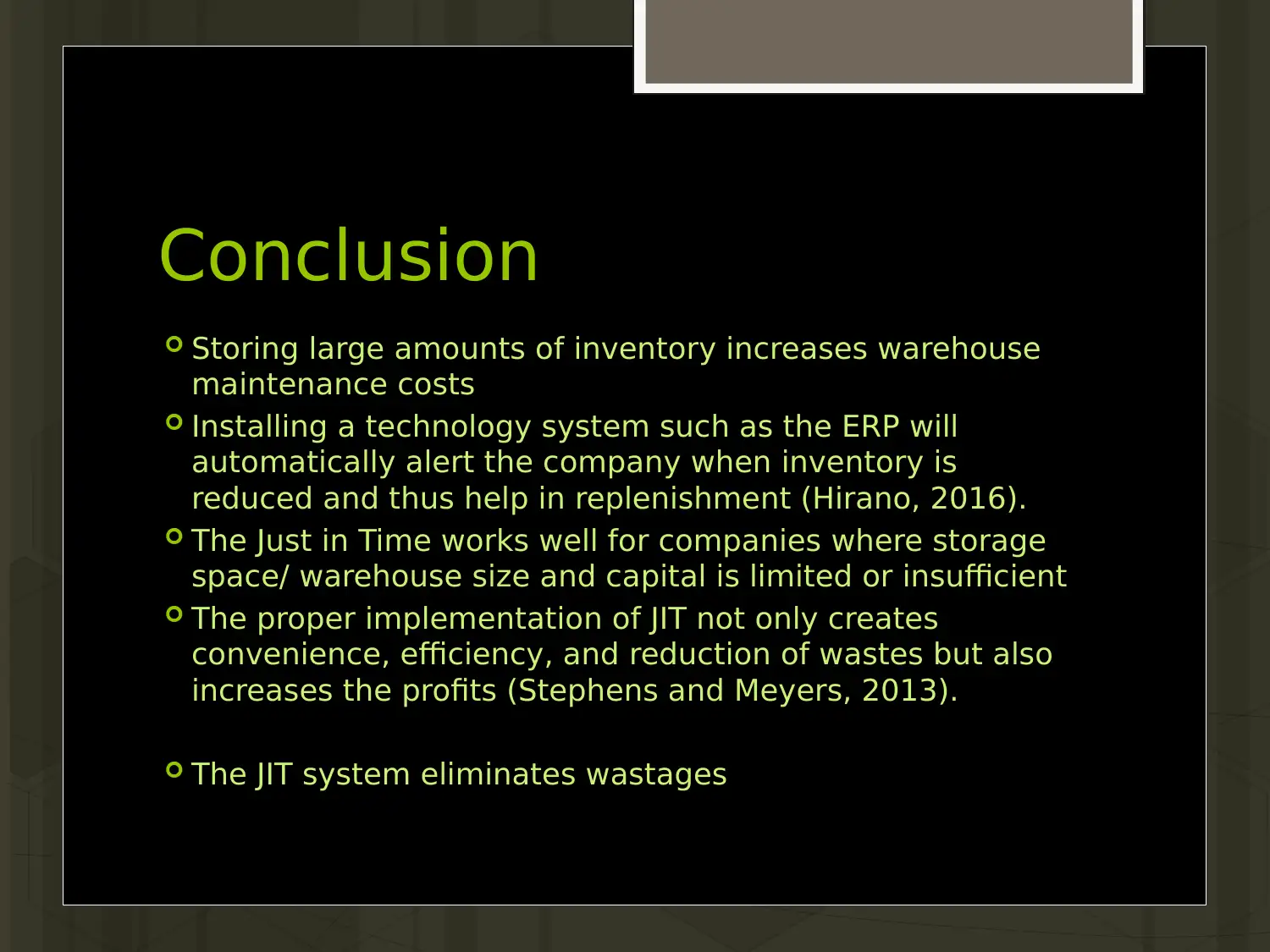






![[object Object]](/_next/static/media/star-bottom.7253800d.svg)